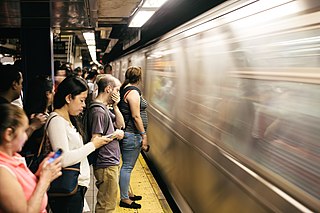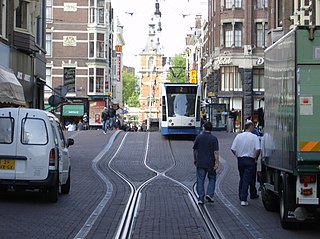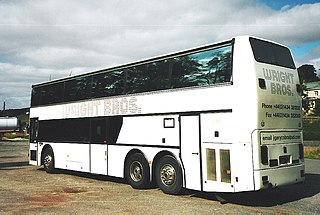
Barbados is an up-and-coming tourist country that provides reliable and safe transportation for natives and visitors alike. The country is very small with a length of 21 miles (34 km) and a width of 14 miles (23 km). Barbados has 1,600 kilometres (990 mi) of public paved roads, two active marine ports in, remnants of a railway system, and one airport; the Sir Grantley Adams International Airport, located in Christ Church.

Transportation planning is the process of defining future policies, goals, investments, and designs to prepare for future needs to move people and goods to destinations. As practiced today, it is a collaborative process that incorporates the input of many stakeholders including various government agencies, the public and private businesses. Transportation planners apply a multi-modal and/or comprehensive approach to analyzing the wide range of alternatives and impacts on the transportation system to influence beneficial outcomes.

Since the start of the twentieth century, the role of the car has become highly important though controversial. It is used throughout the world and has become the most popular mode of transport in the more developed countries. In developing countries, the effects of the car on society are not as visible, however they are significant. The development of the car built upon the transport sector first started by railways. This has introduced sweeping changes in employment patterns, social interactions, infrastructure and the distribution of goods.

Private transport is the personal or individual use of transportation vehicles which are not available for use by the general public, where essentially the user can decide freely on the time and route of transit, using vehicles such as: private car, company car, bicycle, dicycle, self-balancing scooter, motorcycle, scooter, aircraft, boat, snowmobile, carriage, horse, etc., or recreational equipment such as roller skates, inline skates, sailboat, sailplane, etc. Private transport is in contrast to public transport, and commercial non-public transport. While private transportation may be used alongside nearly all modes of public transportation, private railroad cars are rare. Unlike many forms of public transportation, which may be government subsidized or operated by privately owned commercial organizations for mass or general public use, the entire cost of private transportation is born directly or indirectly by the individual user.

Carpooling is the sharing of car journeys so that more than one person travels in a car, and prevents the need for others to have to drive to a location themselves.

A rush hour or peak hour is a part of the day during which traffic congestion on roads and crowding on public transport is at its highest. Normally, this happens twice every weekday; once in the morning and once in the afternoon or evening, the times during which the most people commute. The term is often used for a period of peak congestion that may last for more than one hour.

An auto rickshaw is a motorized development of the traditional pulled rickshaw or cycle rickshaw. Most have three wheels and do not tilt.

The car-free movement is a broad, informal, emergent network of individuals and organizations including social activists, urban planners, transportation engineers and others, brought together by a shared belief that large and/or high-speed motorized vehicles are too dominant in most modern cities. The goal of the movement is to create places where motorized vehicle use is greatly reduced or eliminated, to convert road and parking space to other public uses and to rebuild compact urban environments where most destinations are within easy reach by other means, including walking, cycling, public transport, personal transporters, mobility as a service, ...

Sustainable transport refers to the broad subject of transport that is sustainable in the senses of social, environmental and climate impacts. Components for evaluating sustainability include the particular vehicles used for road, water or air transport; the source of energy; and the infrastructure used to accommodate the transport. Transport operations and logistics as well as transit-oriented development are also involved in evaluation. Transportation sustainability is largely being measured by transportation system effectiveness and efficiency as well as the environmental and climate impacts of the system.

Slugging, also known as casual carpooling, is the practice of forming ad hoc, informal carpools for purposes of commuting, essentially a variation of ride-share commuting and hitchhiking. A driver picks up these non-paying passengers at key locations, as having these additional passengers means that the driver can qualify to use an HOV lane or enjoy toll reduction. While the practice is most common and most publicized in the congested Washington, D.C. metropolitan area, slugging also occurs in San Francisco, Houston, and other cities.
Mode of transport is a term used to distinguish substantially different modes of conveyance. The different modes of transport are air, water, and land transport, which includes Rails or railways, road and off-road transport. Other modes also exist, including pipelines, cable transport, and space transport. Human-powered transport and animal-powered transport are sometimes regarded as their own mode, but never fall into the other categories. In general, transportation is used for the movement of people, animals, and other things. The means of transport, on the other hand, refer to the vehicles necessary for transport according to the chosen mode . Each mode of transport has a fundamentally different technological solution, and some require a separate environment. Each mode has its own infrastructure, vehicles, and operations.
Vanpools are an element of the transit system that allow groups of people to share the ride similar to a carpool, but on a larger scale with concurrent savings in fuel and vehicle operating costs. Vanpools have a lower operating and capital cost than most transit vehicles in the United States, but due to their relatively low capacity, vanpools often require subsidies comparable to conventional bus service.

A bullock cart or ox cart is a two-wheeled or four-wheeled vehicle pulled by oxen. It is a means of transportation used since ancient times in many parts of the world. They are still used today where modern vehicles are too expensive or the infrastructure favor them.

The Maharashtra State Road Transport Corporation abbreviated as, is the state run bus service of Maharashtra, India with around 18515 buses which serves routes to towns and cities within Maharashtra as well as to its adjoining states. It also offers a facility for online booking of tickets for all buses.

A sleeper bus, also known in the US as an entertainer coach and in Europe as a nightliner, is a type of specially adapted coach, often used to transport bands and their technicians and road crew between cities and shows. Other terms used are band bus, crew bus, entertainer bus, NightRider, sleeper coach, and tour bus.
Land transport is the transport or movement of people, animals or goods from one location to another location on land. The two main forms of land transport are rail transport and road transport.

Transport or transportation is the movement of humans, animals and goods from one location to another. In other words, the action of transport is defined as a particular movement of an organism or thing from a point A to a Point B. Modes of transport include air, land, water, cable, pipeline and space. The field can be divided into infrastructure, vehicles and operations. Transport enables trade between people, which is essential for the development of civilizations.

Public transport is a system of transport for passengers by group travel systems available for use by the general public, typically managed on a schedule, operated on established routes, and that charge a posted fee for each trip. Examples of public transport include city buses, trolleybuses, trams and passenger trains, rapid transit and ferries. Public transport between cities is dominated by airlines, coaches, and intercity rail. High-speed rail networks are being developed in many parts of the world.

Wagholi is a settlement in Satara District of Maharashtra State, India. This town is situated in the North Koregaon region. Wagholi plays an important role in the political, economic, social, cultural, and educational lives of people in the Koregaon, Taluka, and Satara Districts.

















